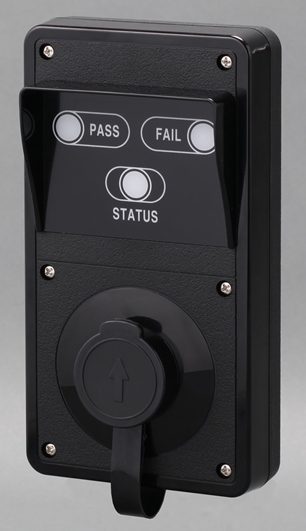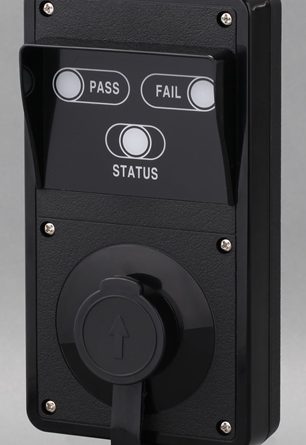Fast and accurate alcohol and drug testing essential for outsourced medical practitioners
 Health and safety are a growing concern for many businesses, especially those operating in high-risk industries such as construction, manufacturing and transportation. Ensuring compliance with the Operational Health and Safety Act (OHSA) requires that all employees have a full medical, including alcohol and drug testing, when they join the company and at least once a year. This requires the services of a nurse or medical practitioner. However, as many of these businesses cannot justify the expense of such a staff member full time, they are increasingly looking to outsource this service. These outsourced medical practitioners perform an essential service, but are faced with a number of challenges themselves, and expediting the process of testing for drug and alcohol use and reporting on this testing is chief among them. Fast, accurate alcohol and drug detection equipment that assists with the reporting process has become essential to help outsourced medical practitioners maximise value while minimising the time it takes to provide their services.
Health and safety are a growing concern for many businesses, especially those operating in high-risk industries such as construction, manufacturing and transportation. Ensuring compliance with the Operational Health and Safety Act (OHSA) requires that all employees have a full medical, including alcohol and drug testing, when they join the company and at least once a year. This requires the services of a nurse or medical practitioner. However, as many of these businesses cannot justify the expense of such a staff member full time, they are increasingly looking to outsource this service. These outsourced medical practitioners perform an essential service, but are faced with a number of challenges themselves, and expediting the process of testing for drug and alcohol use and reporting on this testing is chief among them. Fast, accurate alcohol and drug detection equipment that assists with the reporting process has become essential to help outsourced medical practitioners maximise value while minimising the time it takes to provide their services.
Outsourcing the on-site clinic function is a trend that is gaining impetus in the South African market for a number of reasons. For many organisations, this is not a full time role, and therefore it is not cost effective to retain a full-time nurse. In addition, many smaller companies are starting up within construction and transportation, which need to adhere to health and safety regulations but which cannot afford a full on-site clinic. Utilising the services of an outsourced medical practitioner or nurse is the ideal solution, as they can be called in when needed for annual check-ups as well as screening of new employees.
For medical practitioners, this growing trend toward outsourcing offers significant opportunity for self-employment. However, their ability to earn is limited by the number of medical assessments and health checks they are able to perform. One of the most time consuming aspects of their role has typically been testing for alcohol and drug use, as not only does the equipment take a long time to provide results, these results then have to be manually captured in a spread sheet for reporting purposes. Written files with records of who was tested and their results are also prone to being lost, which proves problematic as this is often the only copy until information is captured electronically.
Speed and accuracy of drug and alcohol testing equipment is essential, as any delays with the testing can negatively impact an organisation’s productivity and thus the reputation of the outsourced practitioner. In addition, annual testing reports must be delivered timeously. New testing systems for both alcohol and drugs can expedite this process, and furthermore enable data to be stored on the devices themselves and then downloaded later, greatly speeding the process and improving risk management with regard to lost data.
New alcohol testing equipment enables information such as name, surname and ID number to be input into the device after a test, and this information is then stored with test data. All information is therefore kept in one place and can be downloaded onto a computer, automatically generating a spread sheet with names, time and date of test, result and so on. Reports can therefore be generated far quicker and sent to the customer, not only saving time for the practitioner but delivering enhanced service to the customer. In addition, these solutions enable a rapid and highly accurate result to be delivered, ensuring that tests can be conducted quickly, and that false positives are kept to a minimum and confidence in the tests can be maintained.
New drug testing equipment provides similar functionality, by enabling the results of all tests to be saved electronically on the testing device, and printed out directly from the machine. This information can also be downloaded to a computer and placed in a spread sheet, and the practitioner simply needs to add the names and ID numbers of the test subjects, saving significant amounts of time. In addition, these tests use saliva, which is far less invasive for participants and enables a medical practitioner to test employees of both sexes. The test can be used to detect between two and six commonly abused drugs, depending on the configuration required, again providing significant time saving.
Alcohol and drug use are part and parcel of many industries, particularly those that are high risk and stressful. However, these same industries are also the ones that need to adhere most strictly to the OHSA, as judgment-impairing substances are a major contributor to workplace accidents and incidents. All organisations operating in such high-risk fields must conduct at the very least, annual check-ups for drug and alcohol use, and preferably more often. Making use of an outsourced practitioner makes sense in many instances, and those practitioners that leverage the power of advanced drug and alcohol testing technology can ensure fast, accurate results and reporting to help minimise risk.
ALCO-Safe
Rhys Evans
Director




